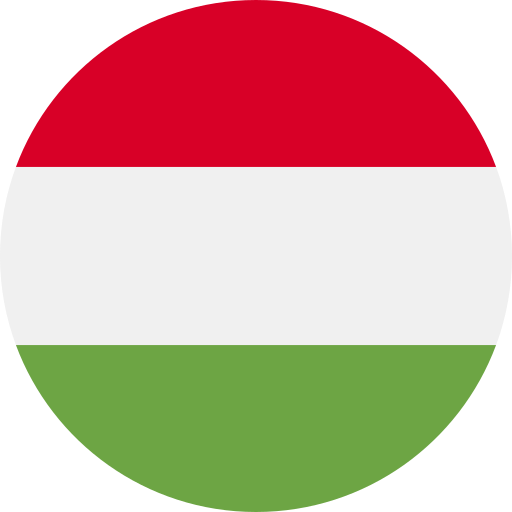Key Takeaways
- Understanding Language Variations: Standard Hungarian is the official language taught in schools, while regional dialects reflect local identities and cultural nuances, enhancing communication within communities.
- Complex Grammar Structure: Standard Hungarian features intricate grammar rules, including vowel harmony and extensive inflectional forms, which can be challenging for learners but provide clarity in formal contexts.
- Diverse Dialect Groups: Major dialects include Western, Eastern, Southern, and Northern variations that showcase distinct pronunciation and vocabulary differences from standard Hungarian.
- Cultural Influences on Language: Regional dialects are shaped by historical events, migration patterns, and local traditions, making them rich with unique expressions and terms that resonate with community heritage.
- Usage Contexts: While standard Hungarian is prevalent in formal settings like education and media, regional dialects thrive in casual conversations among locals, fostering a sense of pride and connection to one’s cultural roots.
- Enhancing Communication Skills: Recognizing both standard and regional forms of Hungarian allows for deeper engagement with native speakers and a richer understanding of Hungary’s linguistic landscape.
Ever wondered why some Hungarians sound so different from each other? The distinction between standard and regional Hungarian language can be fascinating yet confusing. While standard Hungarian is the official form taught in schools, regional dialects bring a rich tapestry of local flavor that reflects cultural identity.
Overview of Hungarian Language
Hungarian, a unique member of the Finno-Ugric language family, differs significantly from its Indo-European neighbors. It features complex grammar and vocabulary that presents challenges for learners. Standard Hungarian serves as the official language in educational institutions and media, ensuring uniformity across the country.
Regional dialects enrich this linguistic landscape by reflecting local identities. These dialects vary in pronunciation, vocabulary, and syntax, creating a tapestry of speech that highlights Hungary’s rich cultural diversity. While standard Hungarian maintains consistency for formal communication, regional variations offer depth and authenticity in casual conversations.
Local communities often embrace their specific dialects with pride. Understanding these differences can enhance your appreciation of Hungarian culture and improve communication skills when interacting with native speakers. Whether you’re seeking to learn or connect with others, recognizing both standard and regional forms elevates your experience within this vibrant language landscape.
Standard Hungarian Language
Standard Hungarian serves as the official form of the language, primarily utilized in education and formal communication. It acts as a unifying medium across diverse regions, ensuring consistency in understanding among speakers.
History and Development
Standard Hungarian evolved from various dialects spoken throughout Hungary. The establishment of this standardized version began in the 19th century, bolstered by efforts from linguists and educators aiming to unify the language for national identity and cultural cohesion. Notably, Károly Szász’s work played a crucial role in defining grammar rules that shaped modern standard usage. As Hungary underwent political changes, so did its language, with standardization reflecting broader social transformations.
Characteristics and Features
Standard Hungarian is characterized by its complex grammar structure and unique vocabulary. It employs vowel harmony, which affects word formation based on vowel types used within words. Additionally, it features extensive inflectional forms to indicate tense, mood, number, and case—making it one of the more intricate languages globally.
In pronunciation, standard Hungarian maintains specific phonetic rules distinct from regional dialects. While regional variations may alter sounds or stress patterns slightly, standard Hungarian offers clear guidelines for articulation that aid learners in mastering communication skills effectively.
By providing a consistent framework for expression across varying contexts—from business settings to media—it ensures clarity while enabling speakers to engage confidently with both local audiences and international counterparts.
Regional Hungarian Dialects
Regional Hungarian dialects showcase the rich linguistic diversity within Hungary, reflecting local identities and cultural nuances. Each dialect varies in pronunciation, vocabulary, and syntax, contributing to the vibrant tapestry of the Hungarian language.
Major Dialects of Hungarian
Hungarian has several major dialect groups that can be categorized based on geographical regions:
- Western Dialect: Spoken primarily in Transdanubia, this dialect features distinct pronunciation and vocabulary variations compared to standard Hungarian.
- Eastern Dialect: Found mainly in Northern Hungary and parts of Transylvania, it includes unique phrases and grammatical structures.
- Southern Dialect: Predominantly used in Southern Hungary and areas along the Great Plain, it showcases notable differences in intonation and word choice.
- Northern Dialect: This dialect is characterized by its specific phonetic traits found in the northern regions of Hungary.
These major dialects not only enrich conversation but also serve as markers of regional pride among speakers.
Cultural Influences on Dialects
Cultural influences heavily shape regional dialects through historical events, migration patterns, and local traditions. The impact of neighboring cultures can be seen in certain vocabulary choices or expressions unique to a region. For example:
- Historical Context: Areas with a rich history often incorporate archaic terms or phrases that resonate with local folklore.
- Social Customs: Local festivals or customs influence language use; specific terms may arise from traditional practices or community events.
- Geographical Factors: Proximity to other languages introduces loanwords into regional speech patterns, further diversifying communication styles.
Understanding these cultural influences enhances appreciation for each dialect’s uniqueness while highlighting how they contribute to the broader narrative of Hungarian identity.
Comparison of Standard and Regional Hungarian
Standard Hungarian serves as the official language, providing a consistent medium for communication across Hungary. In contrast, regional dialects enrich the language by showcasing local identities and cultural nuances.
Linguistic Differences
Standard Hungarian features a structured grammar system with specific rules regarding syntax, inflection, and vocabulary. It’s characterized by its use of vowel harmony and extensive inflectional forms that indicate tense, mood, number, and case. Regional dialects exhibit variations in pronunciation and vocabulary that can differ significantly from standard usage. For instance, certain words may have unique pronunciations or entirely different terms across regions. These differences can sometimes lead to misunderstandings among speakers from different areas but also highlight the richness of the language.
Usage in Everyday Life
In everyday interactions, standard Hungarian dominates formal settings like education and media. It ensures clear communication among diverse groups while fostering unity within the country. However, regional dialects thrive in casual conversations within local communities. You might hear these dialects during family gatherings or community events where individuals express pride in their heritage through language variations. Each dialect tells a story about its speakers’ history and culture, making it an essential aspect of daily life in Hungary. Understanding both forms enhances your ability to connect with locals on a deeper level while navigating social situations more effectively.
Conclusion
Navigating the world of Hungarian language reveals a fascinating interplay between standard and regional forms. While standard Hungarian provides a framework for formal communication and education, regional dialects breathe life into everyday interactions by expressing local identities and cultural nuances. Understanding both forms isn’t just about mastering a language; it’s about connecting with the rich tapestry of Hungarian heritage. Embracing this linguistic diversity allows you to communicate more effectively and appreciate the unique flavors that make up Hungary’s vibrant culture. Whether you’re learning for travel or personal interest, recognizing these differences will enhance your experience in this beautiful country.
Frequently Asked Questions
What is the difference between standard Hungarian and regional dialects?
Standard Hungarian is the official language used in education and formal communication, ensuring uniformity. In contrast, regional dialects vary by geographic area, showcasing unique pronunciations, vocabulary, and grammatical structures that reflect local identities and cultural nuances.
Why is standard Hungarian important?
Standard Hungarian serves as a unifying medium across diverse regions of Hungary. It facilitates clear communication in formal settings like schools and government while promoting national identity and cultural cohesion among speakers.
What challenges do learners face with the Hungarian language?
Learners often struggle with Hungarian’s complex grammar structure, extensive inflectional forms for tense and mood, as well as its unique vocabulary. Additionally, mastering vowel harmony can be particularly challenging due to its influence on word formation.
How many regional dialects are there in Hungary?
Hungary has several major regional dialects categorized into four primary groups: Western, Eastern, Southern, and Northern. Each group exhibits distinct variations in pronunciation, vocabulary, and grammar that highlight local cultures.
What role do cultural factors play in regional dialects?
Cultural influences such as historical context, social customs, and geography shape regional dialects. These factors contribute to the linguistic diversity within Hungary by reflecting the rich heritage of local communities through their unique speech patterns.
Can understanding both standard Hungarian and dialects enhance communication?
Yes! Knowing both forms allows individuals to connect better with locals during casual conversations while navigating formal situations effectively. This understanding deepens appreciation for Hungary’s rich culture and linguistic landscape.







